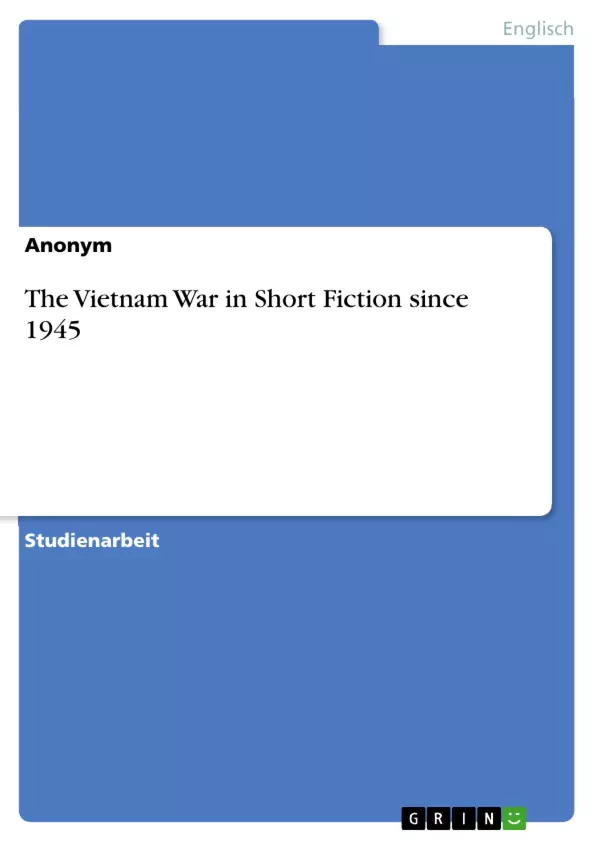When the first short story was written in the early nineteenth century, nobody thought it could be a whole new literary genre. Since a short story tends to be more pointed than longer works of fiction, it may convey the impression that the author just left out several things in order to finish earlier. But it is different: A short story is a good way to describe a single plot without adding unnecessary information or make it more complicated to understand the message. For me, it was most interesting to see, how a short story can help an author to express a war situation.
Since war has to be told in another way than a fairytale, I thought that a short story may be a perfect way to express ones feelings about a certain situation which is hard to understand. Due to this, the best author I could pick was Tim O‘Brien. Since O‘Brien was born in 1946, he was old enough for the army to participate in the Vietnam War. He served from 1968 to 1970 in the third Platoon, A.Co., fifth Battalion, 46th Infantry, as a foot soldier.1 He wrote nine collections of short stories. One of them was "The Things They Carried", which is a fictional collection of some related stories about a platoon of Americans in Vietnam during the war. The story "The Sweetheart of the Song Tra Bong" is a very special one. And since this story is so special, but written as a short story, I was very excited to see how a complex plot can be put into a short story and which features were used by the author in order to involve the reader.
My aim for this paper is to find out how a short story works and why less is often more, regarding the topics of short stories and how the author tries to solve the problem of having less space than a novelist. Additionally, I will contrast the genres of postmodern short stories and traditional short stories. At the end of my paper we will be able to see, whether a short story is a proper way to express complex content, or not. And more importantly, why postmodern short stories are the way they are and why they contain special elements that traditional stories do not.
Table of Contents:
I. Introduction
II. Theory
A.Specific elements of a short story
1. Traditional elements in the story
2. Postmodern elements in the story
III. Context
1. Description of Vietnam and the war
2. Comparison to known literary concepts (e.g. “The Green World“)
3. Meaning of gender in the story
4. Postmodern elements and their effect on the reader
IV. Summary
V. Bibliography
- Arbeit zitieren
- Anonym (Autor:in), 2010, The Vietnam War in Short Fiction since 1945, München, GRIN Verlag, https://www.grin.com/document/199268



